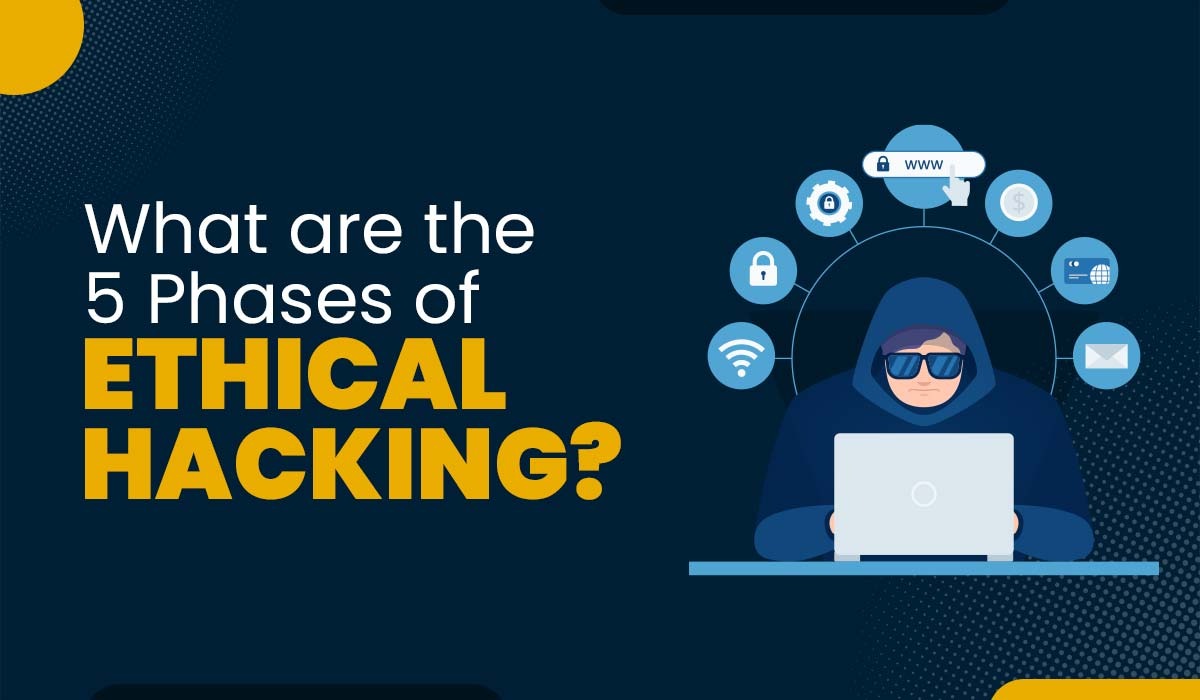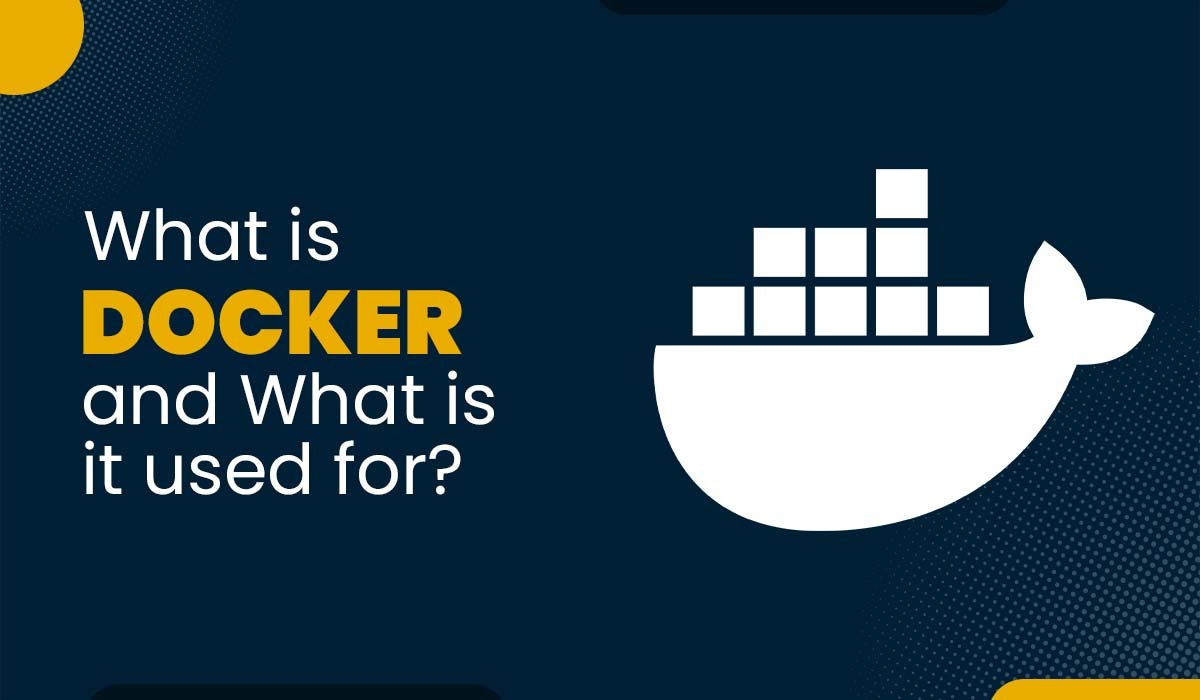What are the 5 Phases of Ethical Hacking?

With the increasing number of organizations shifting to the digital world, the importance of protecting data from hacking and cyber-attacks has become more critical than ever. Many companies are now recognizing the potential risks associated with these attacks and considering proactive measures, such as ethical hacking. But how can ethical hacking help in saving organizations from such attacks? Phases of ethical hacking comprise some crucial steps that ethical hackers take in order to find vulnerabilities and take security measures in order to protect data. In this blog, we will mainly focus on Ethical Hacking, the 5 phases of ethical hacking, and frequently asked questions. Let’s Begin! The goal of ethical hacking is to get a better knowledge of a system’s security by exploiting its weaknesses in a controlled environment. When conducting an ethical hack, a security expert or researcher acts similarly to a malicious hacker. This helps in the early detection and identification of security concerns, making it harder for hackers to exploit. The success of a company’s security strategy can be analyzed and strengthened with the help of ethical hacking, also known as White Hat Hacking. You can also checkout our Ethical Hacking Course. Ethical hacking is important because it allows networks to be protected from cyber threats and is a specific type of penetration testing run for security purposes. Three major importance of ethical hacking are given below: Common types of ethical hacking are given below: We now have a basic understanding of ethical hacking; let’s understand the phases of ethical hacking and how they assist in minimizing the attacks. Ethical hackers are employed by organizations to replicate the effects of a cyberattack on their systems as well as networks. Ethical hackers need a lot of knowledge and expertise before they can find every vulnerability and use them to their advantage. The purpose of this hypothetical attack is to draw attention to all of the enterprise’s weak points and address how to strengthen these weak points. The 5 phases of ethical hacking are: While every ethical hacker doesn’t need to follow the above-discussed phases in a similar order, now, let’s understand the phases of ethical hacking in detail. Reconnaissance is the first phase of ethical hacking which is also known as penetration testing. Before initiating an attack, hackers do research on their targets and uncover useful information like previously used passwords, identities of important individuals as well as the safety precautions that have been taken. There are typically three categories for which data is gathered. These are: In this stage, the ethical hacker has two options for gathering information. These are: Ethical hackers may find it simple to acquire information passively about a target business since almost all of that firm’s data is available to the public. After reconnaissance, the second phase of ethical hacking is scanning. This phase involves applying the data gathered during reconnaissance to the process of searching for security vulnerabilities in the intended location. Ethical hackers do a variety of scans, some of these are: After gathering and analyzing as much data as possible in the first two phases, the ethical hacker next launches a full-scale assault on the target system or network. They use all the vulnerabilities they find to take over the machine in order to achieve administrative access. In the third phase, an attacker tries to deliver a malicious payload to the application by communicating with it across the network, a neighbouring subnetwork, or a locally connected computer. To fake an effort at breaking in, hackers often employ a wide variety of hacking tools and methods, including: Furthermore, the hacker may proceed to simulate additional attacks, such as DDoS and many others. When breaking into a company’s network, hackers often have some goal in mind or strategy to carry it out. This implies that illegally entering or hacking into the system won’t be sufficient. The ethical hacker must maintain access to the system or network until they achieve their objective. Ethical hackers often accomplish this step using Trojans or other backdoors/rootkits. During this time of keeping access, they may also launch more attacks on the company. The final phase involves the completion of the whole ethical hacking process. Upon completing this step, the ethical hacker has effectively gained access to a system or network using hacking techniques. Hackers carry out steps to remove all signs of their harmful behaviour so that no one can trace their actions back to them. These are: The vast majority of hackers who want to remain undiscovered use methods such as tunnelling and various others. After completing all 5 phases of ethical hacking, the ethical hacker will write a report detailing the vulnerabilities and provide recommendations for fixing them. As we all know, the primary benefit of ethical hacking is to protect our data from being stolen and misused by malicious attackers, but it also has many other benefits: The five phases of ethical hacking are – Reconnaissance, Scanning, Gaining Access, Maintaining Access, and Covering Track. The first phase of hacking is known as Reconnaissance. In this stage, the hacker seeks to learn as much as possible about the victim. It may include discovering the target’s DNS information, IP address range, and network. The five stages of cyber security are: Identify, Protect, Detect, Respond, and Recover. The last phase of ethical hacking is known as reporting. Here, the Ethical Hacker writes a report detailing his work, including the tools he used, the rate of success, the vulnerabilities discovered, and the methods he utilized to exploit them. The method of ethical hacking is complex and time-consuming. Successful ethical hacking requires the requisite training skills that are only available to working professionals. The 5 phases of ethical hacking that we discussed in this blog require time, skill, and knowledge to complete successfully.Introduction
What is Ethical Hacking?
Importance of Ethical Hacking
Types of Ethical Hacking
What are the Phases of Ethical Hacking?
Reconnaissance
Scanning
Gaining Access
Maintaining Access
Covering Tracks
Benefits of Ethical Hacking
Frequently Asked Questions
Q1 – What are the 5 phases of ethical hacking?
Q2 – What is the 1st phase of hacking?
Q3 – What are the 5 stages of cyber security?
Q4 – What is the last phase of ethical hacking?
Conclusion







